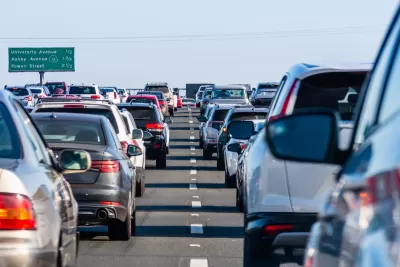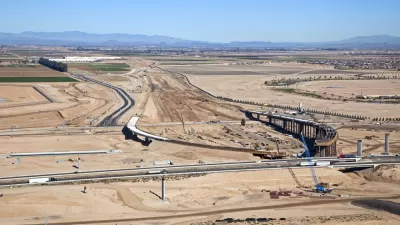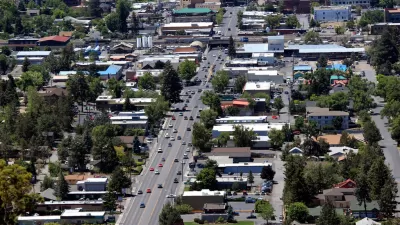The argument is being used to channel climate funding to projects that expand automobile infrastructure, according to an analysis from Transportation for America.

Federal funds aimed at reducing carbon emissions are being used for highway expansion projects, according to an analysis from Transportation for America. As Benton Graham explains in Bloomberg CityLab, the researchers used an AI model to identify projects that expand automotive infrastructure among roughly 60,000 projects nationwide.
The analysis found that a quarter of funds from the Infrastructure Investment and Jobs Act (IIJA)’s Carbon Reduction Program (CRA) are being used for road projects that, according to the organization, “stand to embed high transportation emissions for decades, incentivizing driving and encouraging ever-more-sprawled-out development and land use patterns.”
State agencies, which decide how funds are allocated, claim highway expansions can reduce emissions and air pollution by improving traffic flow and adding energy efficiency upgrades. “But experts point to decades of evidence showing that adding lanes is no fix for congestion, thanks to the well-documented principle of induced demand.” In Houston, peak hour travel times increased three years after a massive $2.8-billion freeway expansion.
“What does work? Policies that deincentivize driving — think stiffer tolls, congestion pricing and zone-based driving fees like London’s Ultra Low Emissions Zone, which charges drivers of high-polluting vehicles.”
FULL STORY: US Climate Funds Pay for Highway Expansion

Alabama: Trump Terminates Settlements for Black Communities Harmed By Raw Sewage
Trump deemed the landmark civil rights agreement “illegal DEI and environmental justice policy.”

Planetizen Federal Action Tracker
A weekly monitor of how Trump’s orders and actions are impacting planners and planning in America.

Why Should We Subsidize Public Transportation?
Many public transit agencies face financial stress due to rising costs, declining fare revenue, and declining subsidies. Transit advocates must provide a strong business case for increasing public transit funding.

Understanding Road Diets
An explainer from Momentum highlights the advantages of reducing vehicle lanes in favor of more bike, transit, and pedestrian infrastructure.

New California Law Regulates Warehouse Pollution
A new law tightens building and emissions regulations for large distribution warehouses to mitigate air pollution and traffic in surrounding communities.

Phoenix Announces Opening Date for Light Rail Extension
The South Central extension will connect South Phoenix to downtown and other major hubs starting on June 7.
Urban Design for Planners 1: Software Tools
This six-course series explores essential urban design concepts using open source software and equips planners with the tools they need to participate fully in the urban design process.
Planning for Universal Design
Learn the tools for implementing Universal Design in planning regulations.
Caltrans
Smith Gee Studio
Institute for Housing and Urban Development Studies (IHS)
City of Grandview
Harvard GSD Executive Education
Toledo-Lucas County Plan Commissions
Salt Lake City
NYU Wagner Graduate School of Public Service





























